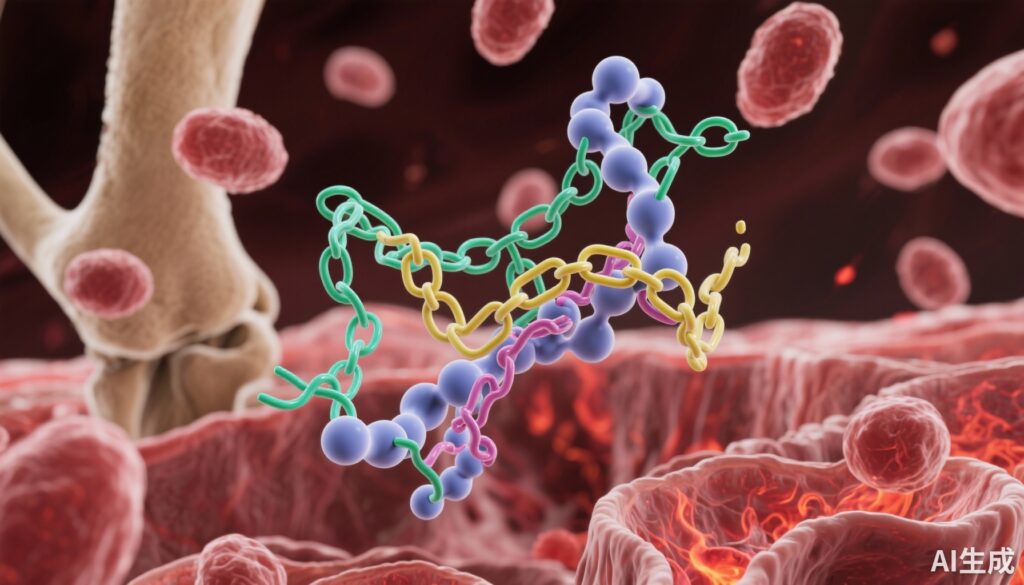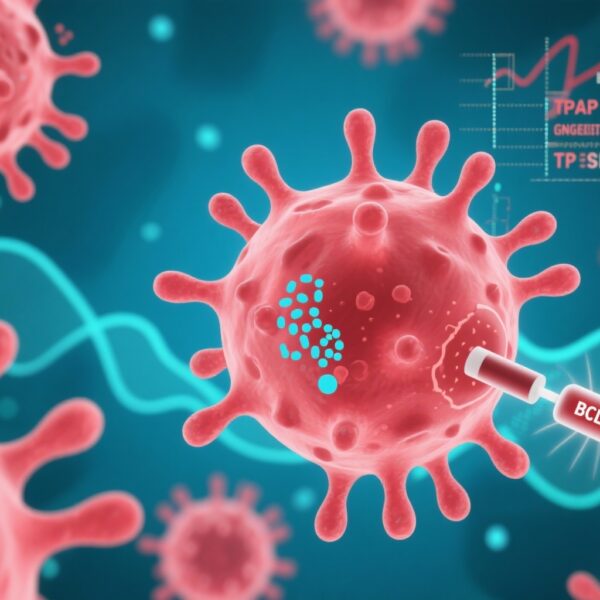Highlight
1. Development of a human monocytic cell model expressing the UBA1M41V mutation recapitulating key pathological features of VEXAS syndrome.
2. UBA1M41V mutant cells show dysregulated ubiquitination, proteotoxic stress, and enhanced unfolded protein response.
3. Mutant cells exhibit heightened sensitivity to E1 ubiquitin enzyme inhibition, particularly revealing a dependency on UBA6.
4. Pharmacological inhibition of UBA6 selectively suppresses growth of UBA1 mutant clones, suggesting a novel targeted treatment strategy for VEXAS syndrome.
Study Background
VEXAS (vacuoles, E1 enzyme, X-linked, autoinflammatory, somatic) syndrome is a recently defined clonal hematopoietic disorder distinguished by systemic hyperinflammation, bone marrow failure, cytopenias, and a high mortality rate. Hallmarked by somatic mutations affecting the methionine 41 (M41) residue of the ubiquitin-activating enzyme UBA1, the disease involves a detrimental switch in UBA1 isoform expression. Although the genetic basis has been elucidated, the precise molecular mechanisms driving the disease phenotype and potential therapeutic vulnerabilities remain inadequately defined, posing significant unmet clinical needs for effective management options.
Study Design
The study utilized CRISPR/Cas9 genome editing to introduce the common somatic mutation UBA1M41V into the male human monocytic THP-1 cell line, thus establishing an in vitro model recapitulating VEXAS syndrome at the cellular level. Comparison was made between wild-type (WT) and mutant cells to delineate proteomic alterations and cellular phenotypes. Comprehensive proteomic profiling was accomplished using mass spectrometry to assess ubiquitination patterns and stress-response pathways. Functional dependencies on E1 ubiquitin-activating enzymes were interrogated using genetic knockdown (shRNA) and pharmacologic inhibitors, including TAK-243, a pan-E1 inhibitor, and phytic acid, a UBA6-specific inhibitor. Assays assessed cell growth, colony formation, apoptosis, and competition to ascertain therapeutic potential.
Key Findings
The engineered UBA1M41V THP-1 cells demonstrated hallmark features of VEXAS syndrome including aberrant UBA1 isoform expression and increased cytoplasmic vacuolization. These cells exhibited pronounced activation of the unfolded protein response (UPR), indicative of enhanced proteotoxic stress. Proteomic analyses revealed widespread dysregulation in ubiquitination, affecting key inflammatory and stress-response pathways consistent with the disease’s inflammatory manifestations.
Functionally, mutant cells exhibited a striking sensitivity to E1 enzyme inhibition. Treatment with TAK-243 preferentially suppressed colony formation of UBA1M41V cells but spared WT cells, correlating with increased apoptotic activity. Intriguingly, TAK-243 displayed preferential inhibitory activity against UBA6 versus UBA1, suggesting a compensatory reliance on UBA6 enzymatic function in the context of UBA1 dysfunction.
Further experiments employing shRNA-mediated UBA6 knockdown and phytic acid treatment confirmed an acquired dependency on UBA6 in mutant cells. Phytic acid selectively impaired the proliferation and clonogenic potential of UBA1M41V cells without affecting WT counterparts, highlighting a therapeutic window for selective targeting of mutant hematopoietic clones.
Expert Commentary
The study provides mechanistic insights into VEXAS pathogenesis by linking UBA1 mutation-induced isoform switching and proteotoxic stress to a synthetic lethal reliance on UBA6. This dependency represents a previously unrecognized vulnerability that can be exploited pharmacologically. The use of TAK-243 and phytic acid as tool compounds underscores the translational potential of E1 enzyme-targeted therapies. However, while compelling, these findings require validation in primary patient-derived cells and in vivo models to confirm clinical applicability and potential off-target effects.
Limitations include the use of a single in vitro model system and the absence of longitudinal studies addressing resistance mechanisms or combinatorial approaches with existing therapies for VEXAS. Nonetheless, this work lays critical groundwork for prospective clinical development of UBA6 inhibitors as precision medicine strategies in clonal hematopoietic inflammation.
Conclusion
The characterization of UBA1M41V mutant THP-1 cells has established a robust human model that mirrors key pathological features of VEXAS syndrome—including dysregulated ubiquitination and enhanced unfolded protein response. The identification of UBA6 as an indispensable compensatory enzyme in mutant cells reveals a novel, targetable Achilles’ heel in VEXAS pathogenesis. Pharmacological UBA6 inhibition selectively impairs mutant clone viability without harming wild-type cells, representing a promising therapeutic avenue for this currently incurable disorder. Future research should focus on expanding these findings into preclinical VEXAS models and optimizing UBA6-targeted drug candidates to improve patient outcomes.
Funding and ClinicalTrials.gov
The referenced study was supported by institutional grants as detailed in Leukemia (2025). No current clinical trials of UBA6 inhibitors in VEXAS are registered in ClinicalTrials.gov at this time, underscoring the emerging nature of this therapeutic concept.
References
Clough CA, Cunningham C, Philbrook SY, Hueneman KM, Sampson AM, Choi K, Greis KD, Starczynowski D. Characterization of E1 enzyme dependencies in mutant-UBA1 human cells reveals UBA6 as a novel therapeutic target in VEXAS syndrome. Leukemia. 2025 Aug;39(8):1997-2009. doi: 10.1038/s41375-025-02671-x. Epub 2025 Jun 30. PMID: 40588566; PMCID: PMC12310546.
Additional supporting literature:
Beck DB, Ferrada MA, Sikora KA, et al. Somatic mutations in UBA1 and severe adult-onset autoinflammatory disease. N Engl J Med. 2020;383(27):2628-2638.
Morimoto M, Orino A, Tsuji Y. Ubiquitin Activating Enzyme E1 and Cellular Functions. Int J Mol Sci. 2021;22(6):3145.
McGuirk JP, Gustafson MP, Wigginton JM, et al. Targeting ubiquitin-activating enzyme 1 in cancer therapy. Cancer Res. 2019;79(17):4709-4717.


